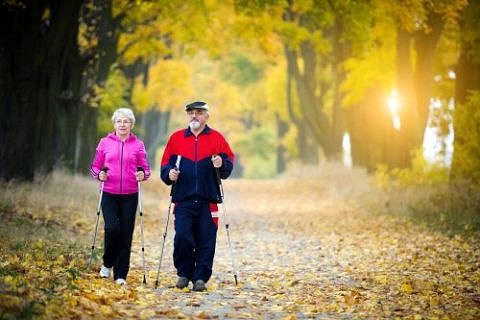Active and mobile in old age
When people become frail in old age, they gradually lose their physical as well as their cognitive abilities. Particularly widespread is loss of muscle strength, mass and quality. The medical term for this is sarcopenia. People with sarcopenia find it difficult to master everyday activities. They often feel insecure and have problems with balance. To help older people keep their mobility it is therefore important to tackle sarcopenia.
Which measures are effective?
‘In geriatrics, falls that lead to a broken hip are considered as the ‘worst case scenario’. If an elderly person has a fall, injures themselves and has to go to hospital as a result, this often triggers a downward spiral,’ explains sport scientist and gerontologist Dr Ellen Freiberger from FAU’s Institute for Biomedicine of Aging. ‘Out of sheer caution, older people stop moving more or less entirely. They no longer leave the house, avoid stairs, etc. But this leads to the loss of more functions. That increases the feeling of insecurity even more – and ultimately the risk of a fall.’
The person affected is, however, not only restricted in their mobility: Sarcopenia also leads to them cultivating fewer social contacts, being able to participate less in public life – overall their quality of life decreases. The health system also faces major challenges when the percentage of frail people in the population rises. That is why it is important to prevent sarcopenia in the best possible way. But which measures are effective? A European research team has examined this in the framework of the SPRINT-T study, in which a total of 1,500 older people took part. The results should help to develop support programmes and initiatives.
‘An important part of our contribution to SPRINT-T at FAU was a study with a total of about 125 people aged over 70, who still lead an independent life but display some functional limitations. We divided the test persons into two random groups,’ reports Dr Freiberger. One group met regularly to do some exercises under supervision. The other group received primarily theoretical instruction in health-related topics – how each individual put this knowledge into practice was, however, left to them.
Active lifestyle holds potential for improving health in old age
Over the course of the study, the research team checked the groups’ physical fitness at regular intervals, for example with a walk test, where the time the participants needed to walk 400 metres was measured. This equates more or less to once round the block and is a distance short enough, for example, to do the shopping close to home without outside help.
The results speak for themselves. Regular exercise is a good way to counteract sarcopenia. Improving stamina, strength and balance proved particularly useful. “Surprising, but also very pleasing, was that at the end of the programme some participants in the exercise group were able to perform more tasks themselves again, such as going shopping, which they previously had no longer managed to do alone,” says Dr Freiberger. ‘This shows that there is a lot of scope for further study and that an active lifestyle holds considerable potential for improving health in old age.’
Further information on SPRINT-T: www.mysprintt.eu/de
About the author
Dagmar Köhnlein is a state-certified translator for English. She studied Nordic philology and history at FAU and now works as a freelance translator, author and editor.
FAU research magazine friedrich
 This article first appeared in our research magazine friedrich. You can order the print issue (only available in German) free of charge at presse@fau.de.
This article first appeared in our research magazine friedrich. You can order the print issue (only available in German) free of charge at presse@fau.de.
